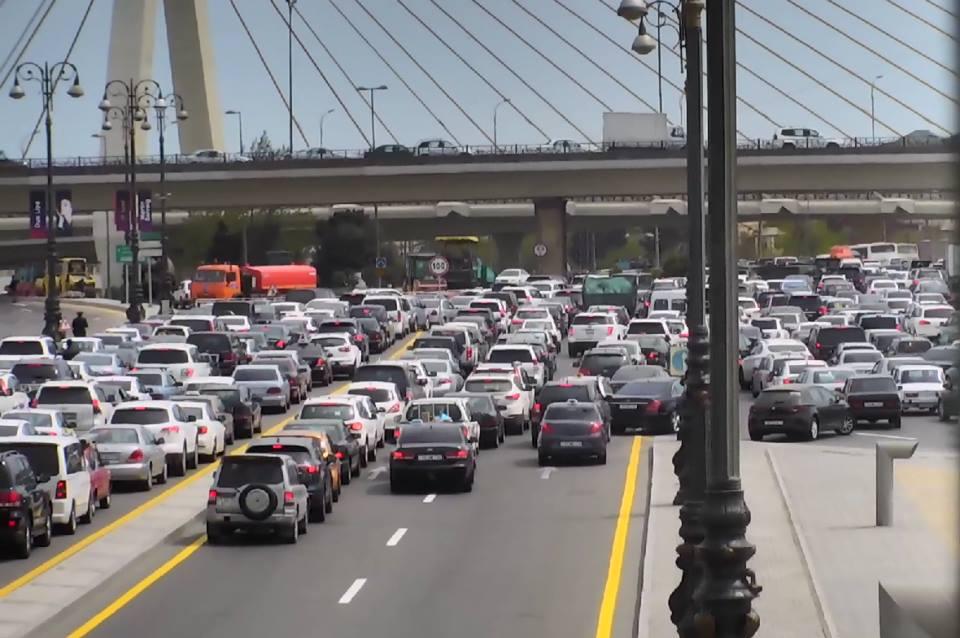Baku, Azerbaijan, July 12
By Azer Ahmadbayli - Trend:
On July 8, President of Azerbaijan Ilham Aliyev chaired a meeting of the Cabinet of Ministers, where, among other things, he touched upon the matter of the city’s transport management.
He stressed that the population of Azerbaijan is growing, and Baku is getting larger: “…our population increased from 7 million to 10 million during the period of independence. How should we act in the future in relation to this growth? We do not want to be in the position of big cities, where people suffer for hours in traffic jams.”
Also, the competitiveness of the economy and ecological safety both highly depend on how the transport system of a city works.
Almost all major urban centers are the main engines of a country’s economy as the bulk of industrial and commercial enterprises are usually concentrated there, creating a significant part of the gross domestic product of a state.
Baku is no exception: the share of GDP in the capital city of Azerbaijan accounted for 75.27 percent of the country’s total volume by the end of 2015 (latest data available).
A few years ago, the US Federal Highway Administration conducted an economic study on the impact of congestions on costs of shippers. Three different methods of cost estimation were used and in all cases the material costs of downtime made the same impressive amount - $ 7 billion per year, which is correlated with independent estimates.
Large cities at least twice a day suffocate from traffic jams mostly because the capacity of the road network is sometimes much behind the growth of the number of vehicles, that is, the demand is ahead of supply.
In Beijing, for example, the annual growth of the road network is about 2 percent with an increase in the number of cars making 10 percent. The same is true for all mega cities but the tendency is particularly visible in developing countries.
Therefore, many countries give up the idea of further road-building projects realizing that if they cannot fit the supply to the demand, they need the demand to be restricted.
During the last fifteen years the government of Azerbaijan has been taking unprecedented and necessary measures to develop the capital’s road network spending hundreds of millions of dollars on the construction of new roads, reconstruction and expansion of existing ones, construction of transport interchanges in places of the biggest congestion.
However, at the same time, it is becoming obvious that the congestion in Baku, especially in its central parts, is likely a result of a sharp increase in a number of vehicles, and accordingly, the intensity of traffic flows, which the existing road network can hardly swallow.
An effective means would be to impose a financial burden on those who want to enter the central part of Baku on a private car. Charging entry fees to an overloaded traffic area will not be discriminatory, but a fair measure to improve the efficiency of the economy and improve the environmental situation in the city.
On the one hand, people will have a choice of a route and travel method, on the other hand - paid entry will form a financial source to cover the funds allocated for improving the city’s transport system.
The electronic system of payment for entry into the zone with overloaded traffic to limit the flow of vehicles is used in many cities around the world, and every year their number is growing.
Singapore was the first city to use this high-tech system. Some 85 portals were constructed at all the entrances to the Central business district of the city, which have been equipped with a laser car identification system and infrared cameras to track the entry and exit from the zone.
The cars are fitted with special devices that interact with sensors installed on the portals. The car, passing under the portal and entering the paid zone, is identified, and a tax amount is automatically charged from the smart card, which is immediately displayed on the screen of the device.
The system does not limit traffic in any way, and there are no manual operations or transport stops. Out of 4.3 million transactions, the system made three errors.
Until 2007, Stockholm also suffered from daily traffic jams, as up to half a million cars used to enter the city every day.
As a result of the installation of this system, traffic intensity during peak hours in the center of Stockholm fell by 25%, the number of public transport passengers increased by 6%, the turnover of trade enterprises located in the city center increased by 6%, the presence of exhaust gases in the atmosphere decreased by 8-14%, the greenhouse effect (CO2) in the city center decreased by 40%.
There are many different technical and regulatory mechanisms for managing the system in different countries. Most often, the time mode of payment is five working days of the week from 7 AM to 8 PM.
The highest fee for entering the zone is during peak hours. Payment methods are also different: by phone, via the Internet, using a smart card, etc. Residents have discounts, for example, in London the discount for residents of the paid zone is 90%.
The emergency services, taxis with a state license, vehicles operated by disabled people are exempted from paying tax. The system of fines for unpaid entry is also envisaged and tested.
As the world practice shows, at the initial stage, the majority of citizens in countries where the system was implemented, showed conservatism – it seemed to them that this is just an additional opportunity for the state to collect another tax.
But the economic and environmental effect in London, Oslo, Singapore, Stockholm, Brisbane and other major cities have demonstrated the effectiveness of such transport limitation.
Today this may look unreal for Baku, but what about tomorrow?






